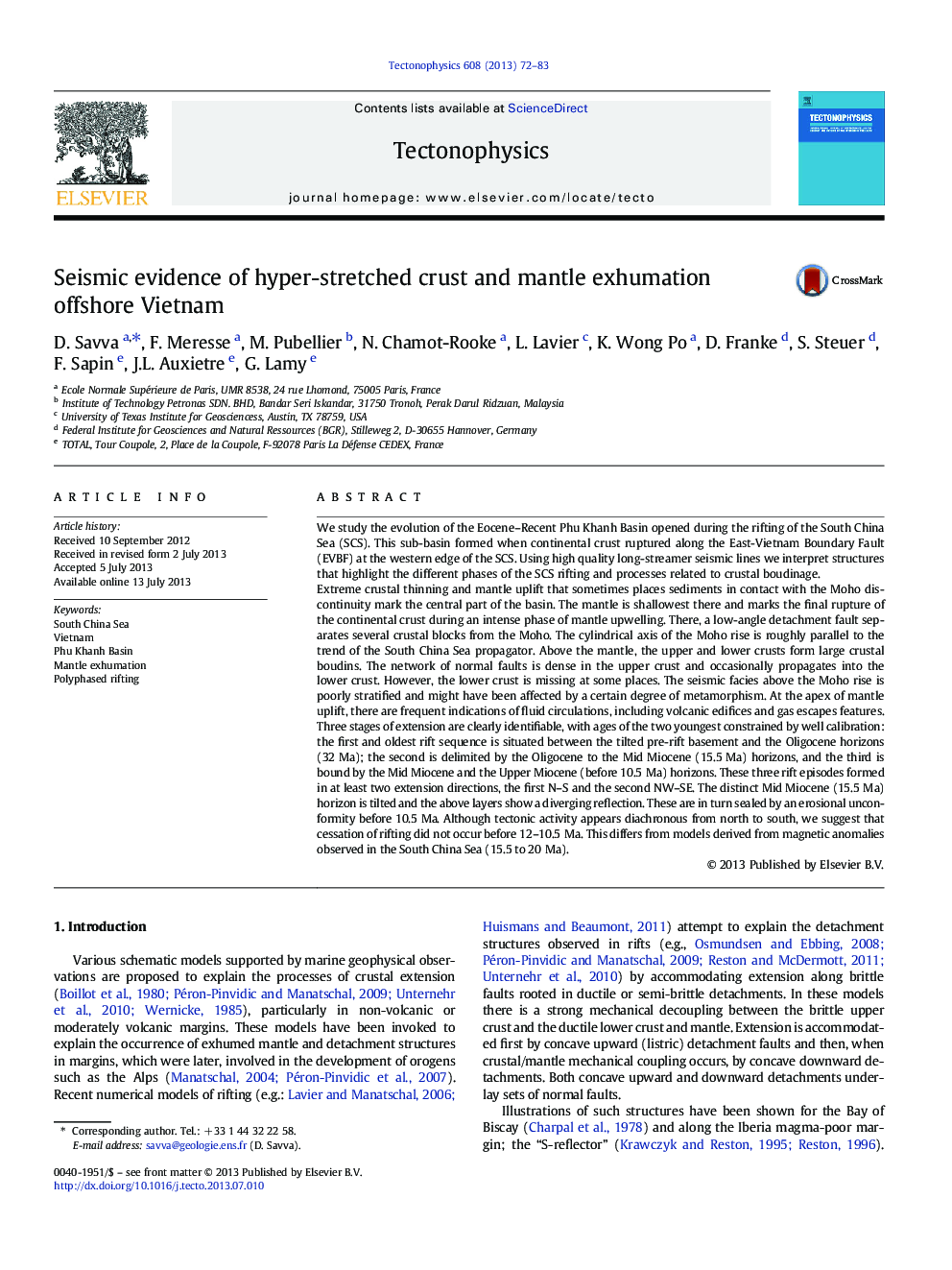| Article ID | Journal | Published Year | Pages | File Type |
|---|---|---|---|---|
| 6433923 | Tectonophysics | 2013 | 12 Pages |
â¢We document a dome of exhumed mantle offshore central Vietnam, South China Sea (SCS).â¢We document crustal boudins and the ductile lower crust creeping.â¢The tectonic activity in the Phu Khanh basin ended between 15.5 My and before 10.5 My.â¢The Phu Khanh basin rifting phase ended after the SCS spreading phase.â¢A reconstruction of the Phu Khanh basin evolution in the frame of the SCS opening
We study the evolution of the Eocene-Recent Phu Khanh Basin opened during the rifting of the South China Sea (SCS). This sub-basin formed when continental crust ruptured along the East-Vietnam Boundary Fault (EVBF) at the western edge of the SCS. Using high quality long-streamer seismic lines we interpret structures that highlight the different phases of the SCS rifting and processes related to crustal boudinage.Extreme crustal thinning and mantle uplift that sometimes places sediments in contact with the Moho discontinuity mark the central part of the basin. The mantle is shallowest there and marks the final rupture of the continental crust during an intense phase of mantle upwelling. There, a low-angle detachment fault separates several crustal blocks from the Moho. The cylindrical axis of the Moho rise is roughly parallel to the trend of the South China Sea propagator. Above the mantle, the upper and lower crusts form large crustal boudins. The network of normal faults is dense in the upper crust and occasionally propagates into the lower crust. However, the lower crust is missing at some places. The seismic facies above the Moho rise is poorly stratified and might have been affected by a certain degree of metamorphism. At the apex of mantle uplift, there are frequent indications of fluid circulations, including volcanic edifices and gas escapes features.Three stages of extension are clearly identifiable, with ages of the two youngest constrained by well calibration: the first and oldest rift sequence is situated between the tilted pre-rift basement and the Oligocene horizons (32Â Ma); the second is delimited by the Oligocene to the Mid Miocene (15.5Â Ma) horizons, and the third is bound by the Mid Miocene and the Upper Miocene (before 10.5Â Ma) horizons. These three rift episodes formed in at least two extension directions, the first N-S and the second NW-SE. The distinct Mid Miocene (15.5Â Ma) horizon is tilted and the above layers show a diverging reflection. These are in turn sealed by an erosional unconformity before 10.5Â Ma. Although tectonic activity appears diachronous from north to south, we suggest that cessation of rifting did not occur before 12-10.5Â Ma. This differs from models derived from magnetic anomalies observed in the South China Sea (15.5 to 20Â Ma).
